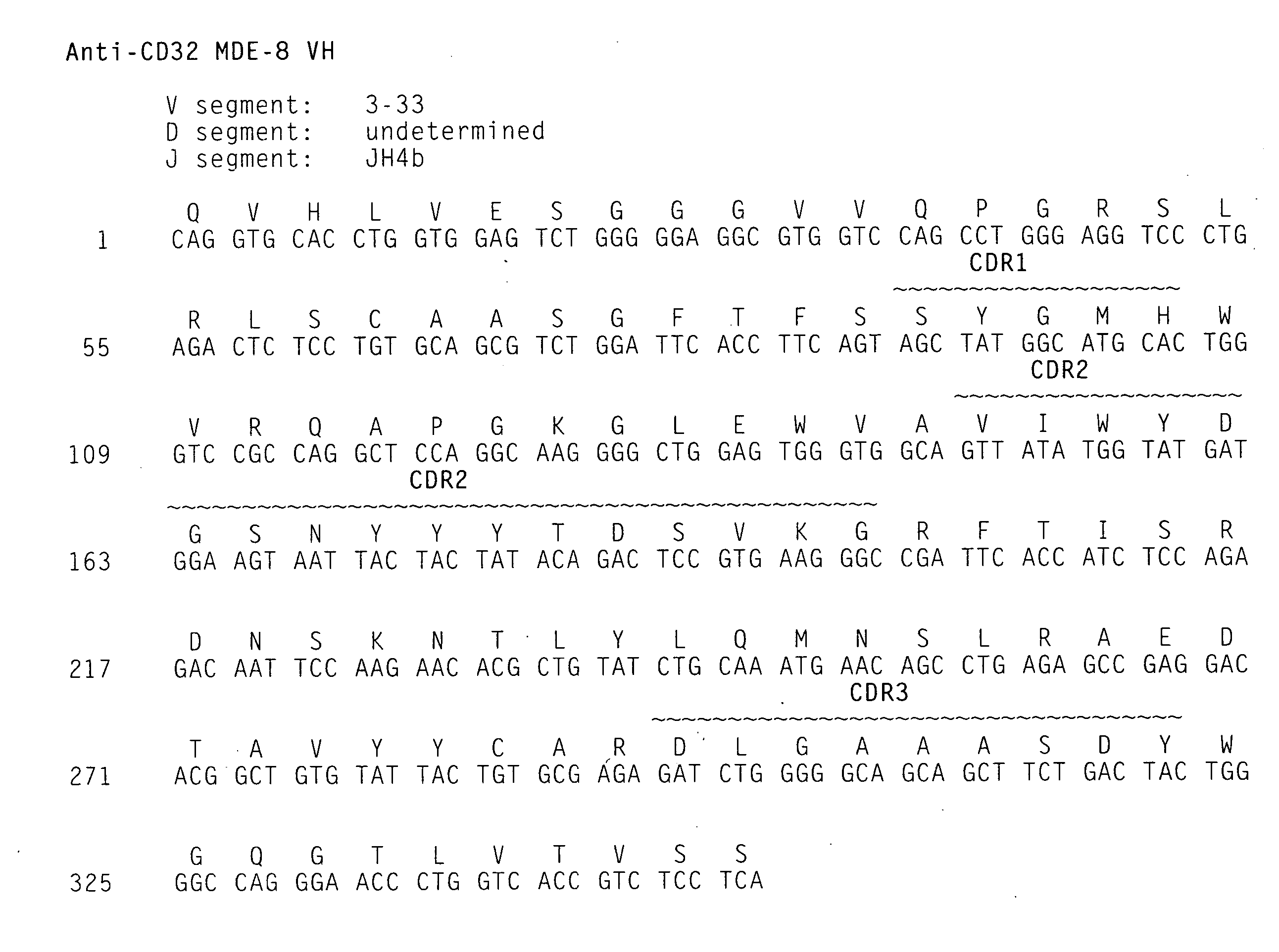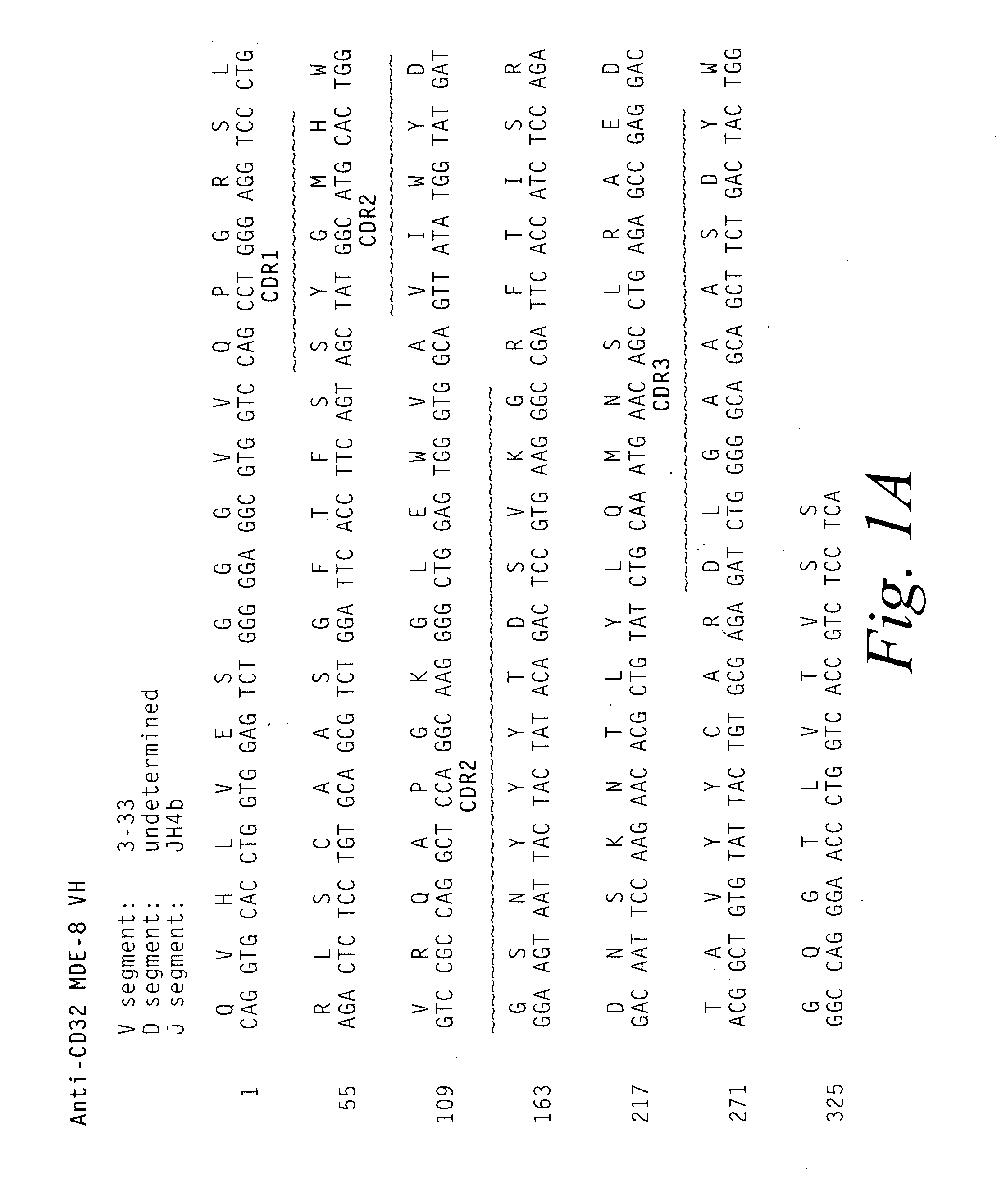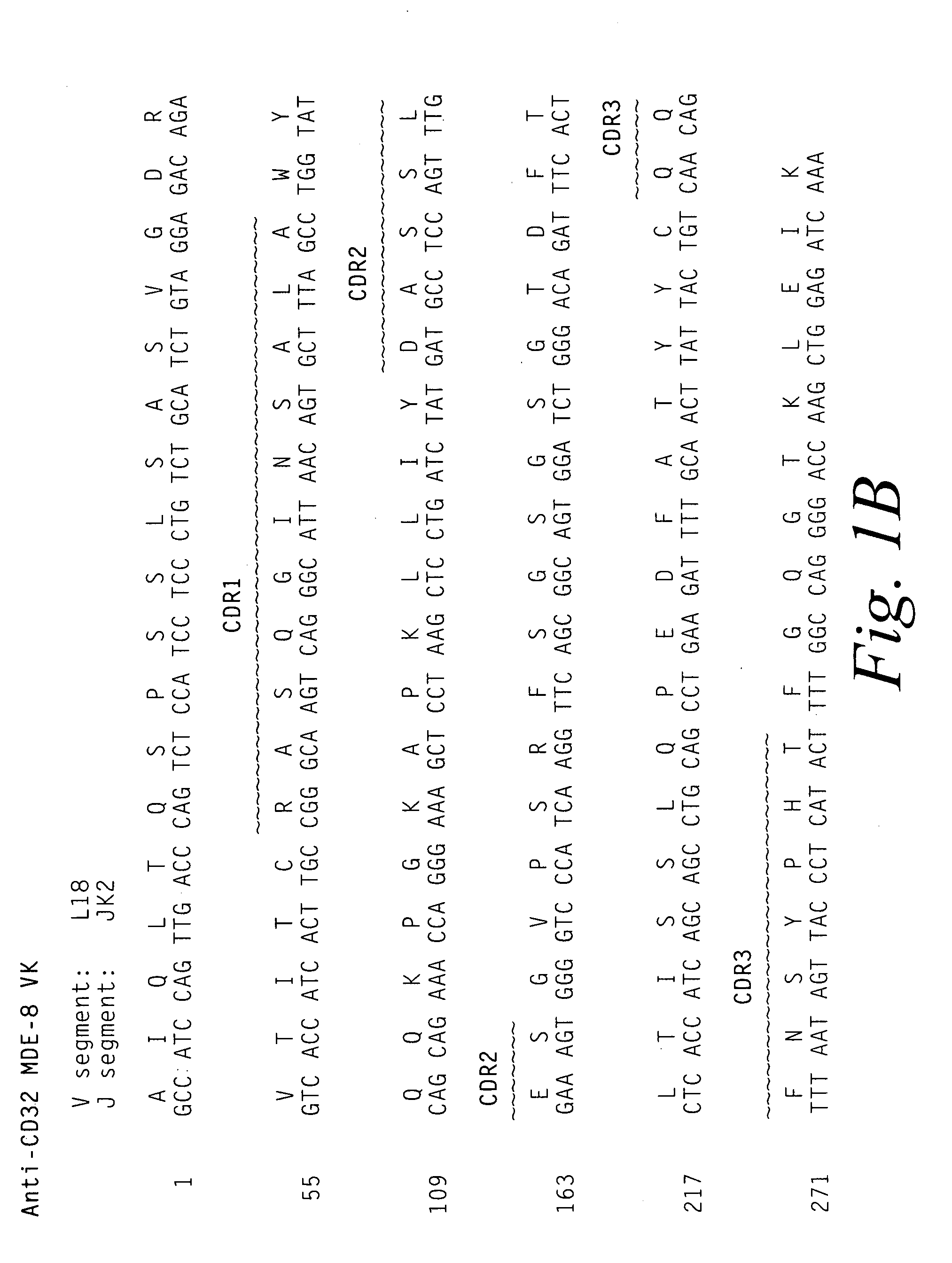Human monoclonal antibodies to FC gamma receptor II (CD32)
a technology of gamma receptor and human monoclonal antibodies, which is applied in the field of human monoclonal antibodies to fc gamma receptor ii (cd32), can solve the problems of increasing the risk of viral infections, both types of assays are not always applicable in routine laboratory settings, etc., and achieves the effect of inhibiting autoimmune hemolytic anemia and high affinity
- Summary
- Abstract
- Description
- Claims
- Application Information
AI Technical Summary
Benefits of technology
Problems solved by technology
Method used
Image
Examples
example 1
Generation of Human Monoclonal Antibodies Against CD32
[0390] A fusion protein comprised of FcγRIIa-H131 (FcγRIIa with an arginine (R) to histidine (H) substitution residue 131) conjugated to human serum albumin was used as antigen for immunization. In addition, IIA1.6 cells (mouse B cell lymphoma Fc gamma receptor negative cell line) transfected with either FcγRIIa-H131 or FcγRIIa-R131 in PBS were also used for subsequent immunizations.
Transgenic HuMab Mice
[0391] Fully human monoclonal antibodies to human CD32 were prepared using the HCo7 strain of HuMab transgenic mice, which expresses human antibody genes. In this mouse strain, the endogenous mouse kappa light chain gene has been homozygously disrupted as described in Chen et al. (1993) EMBO J. 12:811-820 and the endogenous mouse heavy chain gene has been homozygously disrupted as described in Example 1 of PCT Publication WO 01 / 09187. Furthermore, this mouse strain carries a human kappa light chain transgene, KCo5, as...
example 2
Structural Characterization of Human Anti-CD32 Monoclonal Antibodies
[0395] The cDNA sequences encoding the heavy and light chain variable regions of the MDE-8 or MDE-9 monoclonal antibodies were obtained from the MDE-8 and MDE-9 hybridomas using standard PCR techniques and were sequenced using standard DNA sequencing techniques.
[0396] The nucleotide and amino acid sequences of the heavy chain variable region of MDE-8 are shown in FIG. 1A and in SEQ ID NO: 9 and 7, respectively.
[0397] The nucleotide and amino acid sequences of the light chain variable region of MDE-8 are shown in FIG. 1B and in SEQ ID NO: 10 and 8, respectively.
[0398] Comparison of the MDE-8 heavy chain immunoglobulin sequence to the known human germline immunoglobulin heavy chain sequences demonstrated that the MDE-8 heavy chain utilizes a VH segment from human germline VH 3-33, an undetermined D segment, and a JH segment from human germline JH4b. The alignment of the MDE-8 VH sequence to the germline VH 3-33 se...
example 3
Binding Characterization of MDE-8
[0404] In this example, and / or in Examples 4 and 5, the following materials were used:
Cells
[0405] IIA1.6 cells transfected with FcγRIIa-R131 (Van Den Herik-Oudijk et al. (1994) J. Immunol. 152:574-585), Ila-H131 (Van Den Herik-Oudijk (1994), supra), Fca receptor (Morton et al. (1995) J. Biol. Chem. 270:29781-29787), Jurkat cells, naturally expressing FcγRIIIa, IIA1.6 cells expressing FcγRIIb1* (Van Den Herik-Oudijk (1994), supra), as well as Raji cells, expressing CD20 were cultured in RPMI 1640 medium supplemented with 10% heat-inactivated fetal calf serum (FCS, Hyclone, Logan, Utah) and penicilline / streptomycine. The human monocytic cell-line THP-1 (American Type Culture Collection, Rockville, Md.) was cultured in RPMI 1640 medium (GibcoBRL, Grand Island, N.Y.) with 10% FCS and penicilline / streptomycine. Mononuclear cells from healthy donors, allotyped for FcγRIIa by PCR (Carlsson et al. (1998) Blood 92:1526-1531), were isolated from heparinize...
PUM
| Property | Measurement | Unit |
|---|---|---|
| Fraction | aaaaa | aaaaa |
| Affinity | aaaaa | aaaaa |
Abstract
Description
Claims
Application Information
 Login to View More
Login to View More - R&D
- Intellectual Property
- Life Sciences
- Materials
- Tech Scout
- Unparalleled Data Quality
- Higher Quality Content
- 60% Fewer Hallucinations
Browse by: Latest US Patents, China's latest patents, Technical Efficacy Thesaurus, Application Domain, Technology Topic, Popular Technical Reports.
© 2025 PatSnap. All rights reserved.Legal|Privacy policy|Modern Slavery Act Transparency Statement|Sitemap|About US| Contact US: help@patsnap.com



